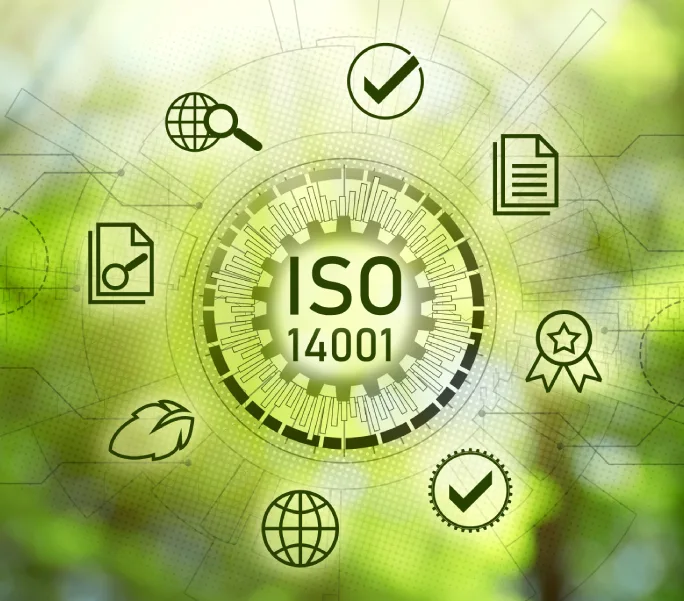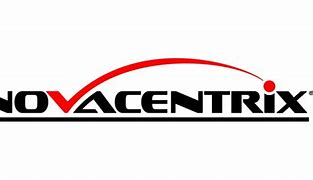QIC Global and Bluewolf are the same company.
QIC Global and Bluewolf are the same company.
Do you need to reduce your company’s carbon footprint? Get the ISO 14001 environmental sustainability management system to improve your present system. Reduce carbon emissions by optimizing the resources most effectively. The international standard offers a set of practical clauses that help organizational systems work according to environmental protection laws. Enhance the sustainability and welfare of the community and environment with ISO 14001.





ISO 14001 is the international standard that sets the clauses for an effective environmental management system. Organizations that need professional support to minimize their yearly carbon footprint, need the ISO 14001 certification. The standard aims to generate awareness among the management and stakeholders about the necessity to reduce resource wastage. It offers regulatory references, which can be implemented to maintain a balance between business activities and the environment. Companies, regardless of their size and belonging to any industry can acquire the standard.
The role of the international environmental management system by ISO 14001 is to develop production and delivery practices, which are sustainable. It ensures that no organizational activity harms the welfare of the community and the ecosystem.




What I can confidently say is that having you as our auditor has been incredibly insightful, thanks to your deep understanding of ISO requirements and their significance. Your guidance has helped us truly grasp the purpose behind the new processes and templates we’ve implemented due to ISO compliance, which has been a major benefit. It has allowed us to not only apply them more accurately but also recognize their importance in our QMS journey.


“I would have to give them a 10 out of 10. They were on time with everything, they were prompt, we were in and out of meetings quickly. It couldn’t have gone smoother. It exceeded my expectations.”
“Blue Wolf was one of a few companies that was recommended to us. Particularly, when I looked through some of these, Blue Wolf had a pretty good reputation and I was able to see some of the companies that they worked with previously and you know, felt comfortable with it. They were recommended as a solid company to work with by Compliancehelp who we used for the consultant.”
“The auditor did a great job. She was very organized. Everything kind of went through smoothly. I expected it to be a bit more intimidating of a process, but she was very kind to work with. We kind of went through step by step, looked at the processes. It felt more like being interviewed on our processes than interrogated. To have to go in and have your processes scrutinized is in and of itself sort of a daunting task. Blue Wolf made it very easy. They were helpful in clarifying anything that I had questions on. For the cost, I think it’s a fantastic value. We’ll actually be looking to work with them again in the future on our inspection audits.”
“I would say our experience with them was fantastic. Again, we did some research, looked through, we went with one that we were comfortable with, and I’d say they’re 100% worth the money. I would have to give them a 10 out of 10. They were on time with everything, they were prompt, we were in and out of meetings quickly. It couldn’t have gone smoother. It exceeded my expectations.”


Firstly, on behalf of Adam and myself, we would like to thank you both very much for providing us with the support and service during our ISO accreditation and certification process. Your professional and knowledgeable approach and support has been very much appreciated.


The experience was overwhelmingly really good. I thought we were ready but there were some lightbulb moments. It was a logical process. The auditor was patient. We wanted the certification for areas of opportunity and we had many recommendations. I appreciated the audit. I haven’t heard anything negative out of the process to date. It’s been good.


“One of the greatest things that initially sold me on BLUE WOLF was your approach towards partnering, understanding, and treating us with respect towards where we are at in compliance with the standard.”
“I was nervous about it until we spoke on the phone in the premeeting. Once you started talking about your approach and your process I was sold. But to see it in real life and to see it actually come true was even more (…)”
After his first day of the audit: “I’ve been through so many audits you can’t even count. Your approach is by far superior than any other audit I’ve ever been through. The contrast was night and day. I’ve got some younger people who don’t have quite the same experience as I do, and their ability to feel like they could be participatory, have value and be respected throughout the process was outstanding. I have not made a better choice in picking a company to work with us in an audit process prior to you. You’re going to be here every year if I can help it. And if ownership changes and they want to do something different, I’ll fight to keep this process going because it has so much value.”


The audit process allowed us to reflect on our operations and values as a company. It was like holding up a mirror to our organization, enabling us to see where we excelled and where we could improve. This commitment to self-assessment and continuous improvement is becoming more strongly ingrained in our company culture.
Our strong safety culture was reaffirmed during the audit. It was heartening to see our safety practices acknowledged and validated by the auditors. This not only boosted our employees’ confidence in our safety protocols but also highlighted our dedication to their well-being.
Moreover, the audit experience with Blue Wolf Certs provided an opportunity for leadership and career development within our organization. Team members involved in the audit preparations and execution gained valuable skills and insights, which has had a positive ripple effect on their professional growth and our overall leadership pipeline.
As a values-based company, the audit served as a reminder of our commitment to ethical, responsible, and best-in-class business practices. It reinforced our belief that aligning our operations with these values is not just a box to check but a core part of who we are as a company.
Ultimately, the ISO 9001 audit was a journey of self-discovery and improvement. It highlighted our strengths and identified areas for growth. It was a testament to our dedication to customer satisfaction, quality, and continuous enhancement in all facets of our business. It was a great deal of work to “get here”, but now the real work is just getting started!


After a lot of research and careful review of our options we chose to work with Blue Wolf, and we know now that we made the right decision. It’s been a great process, and I would recommend to anyone that is considering ISO 9001 to at least have a conversation with them. I don’t think you would regret it at all.
At the very beginning of this process, I think we can safely say we were very nervous about it and apprehensive about doing it. After our auditor Seth Shea arrived, we realized again what a great decision we made. He’s made this process way much easier than we thought it might be, not as scary. And the insight he’s given us, and the observations and suggestions has been one of the most… really one of the best business decisions I think we’ve made in the entire time we’ve been here in the company.


I would like to take the time to commend your company and Seth especially. Our recent experience with Blue Wolf Certs during our ISO audit was a completely different experience than what we have experienced in the past with other companies. Seth’s audit was 100% a value add to our company. His findings were spot on. There were apparent holes in our processes he was able to identify, and we were able to make significant changes during the audit process to immediately fix the processes. We also implemented checks and balances based off suggestions he made throughout the audit to help monitor and double check our processes. He was open and honest throughout the entire process. I am certain that we have found a partnership that will help strengthen our company in the years to come. I look forward to working with your company and Seth in the future as your team helps to strengthen our company.


I’ve never been involved in auditing before. Completely new. Was not sure what to expect. The process was seamless. There were some good recommendations. I was made to feel comfortable. The process worked quite well. I’m feeling more than ready for the next audit. There was so much going on at the time of the audit that I just wanted to go back to the audit, it was more relaxing.


I’ve never been a part of one of these. I have learned absolutely so much. It was a privilege to be a part of this. I don’t ever want to experience an audit a different way.


If everybody could have an audit experience like this, more and more people would actually consider an ISO certification. Because so many people hear so many things about it, stressful myths, and everyone has a bad auditor experience from somewhere else. If more people could experience an audit this way, they wouldn’t have any reason to fear ISO.


I’ve seen some really bad crap auditors. Even I learned a whole lot from what we just went through with Seth that I didn’t even understand about the standard before.


When we first started the process of looking at the standard, we were afraid we would have to force our company into a new way of doing almost everything in doing our business. And we were very pleased to find out that the standard was meant to fit how we already were doing things. And Blue Wolf and Seth really helped us in the audit to not feel so intimidated by it, but to understand it, yes that the way we are doing it does fit the standard, and instead of just criticizing where we were coming short, he gave us advice and suggestions on how the standard is actually meant to be used, to improve how we are doing things, not to force us into a certain way of somebody else doing it.
Our experience has been that this process in working with the auditors has shown us more ways to improve internally than what we expected, and we would recommend going through this for anybody that’s considering it.


“Blue Wolf has been great with providing us with clarity and direction so that our team can focus on the important aspects of our quality and safety management systems. What seemed like a very intimidating process to achieve ISO accreditation was made simple by Blue Wolf and their team. Their knowledge and our processes have added value and elevated our quality and safety program to another level. Thank you, Seth Shea, and the Blue Wolf team for a wonderful ongoing experience.”


“Streamlined. Easy to communicate, easy to talk to. Relaxed, didn’t feel pressured. Recommended for future ISO projects.”


“We completed our audit today with 1 minor non-conformance and 2 observations. I would highly recommend Blue Wolf certifications to anyone else your company is working with. Our auditor was so personable, made the audit process as relaxed and comfortable as possible, made our staff feel comfortable talking to him, and he was very thorough in his findings. He makes you feel like you are working together, which is HUGE and really rare in a company/auditor relationship.”


“It’s a very great experience. She (Tanya) helped me a lot and she explained a lot. If there is something that we might need to improve on, she will explain in a very detailed way. It’s a very smooth and very clear process. Definitely recommended.”


“We were very happy with the service, and I would definitely recommend them for anybody who is looking to gain ISO accreditation. The auditor was very knowledgeable, very understanding, very helpful. It wasn’t just a scrutiny of your documentation and processes, it was actually a helpful process, constructive in the feedback that was given. The auditor was very professional throughout the whole process. Very punctual, always on time, ready to go. Was again open and honest about the whole process, so myself and business partner knew exactly what to expect for each day for each part of the process.
Yes, I would recommend Blue Wolf. They were very professional throughout the whole process. The auditors were very knowledgeable and helpful and made the whole process of the ISO external audit very easy and comfortable, and we would definitely recommend for anyone looking to gain ISO accreditation.”


“Would give them a 10 out of 10 and would highly recommend them to anybody looking to get ISO certification in the future. The audit was very very smooth. The day one audit was helpful, because although there weren’t any findings made he did make some recommendations to our QMS and our on-time delivery matrix which we incorporated on that same day, once again with Lee’s help We updated our QMS same day, got it to the auditor and he was very happy to see the changes we had made, even though they weren’t going to be any findings they were just recommendations, I think it did smooth the process through. Seth was fantastic, very easy to work with, once we got through the time zone issues, very professional, knew what he was doing, knew where to look, and I assume he knows where the holes typically are. He also made a lot of accommodations to where we are in the world and helping us getting that certification.”


“I found Blue Wolf to be the Cheapest and most experienced in my eyes ‘cause all of the price ranges were higher than Blue Wolf, so I stuck with Blue Wolf. Their quality was very high as well.”
Q: What would you say to those who are considering Blue Wolf for their ISO certification audit?
A: “They’re gonna get the most bang for their buck out of it. They’re gonna charge the cheapest out of the other companies and give you a high standard of quality work.”


“We chose Blue Wolf as a recommendation from Compliancehelp and we found the process to be as smooth with Blue Wolf as it has been with our consultant.”
“We worked with Seth from Blue Wolf as our auditor, and I’ve maintained dialogue with him for future audits. The support that we obtained from Seth because it was a newer accreditation was absolutely fantastic.”
“The service provided by Blue Wolf has been second to none. The open communications, the information that’s given to us, the whole process is explained from agenda being set throughout the audit, to the close of the audit, and the issuant of the certification.”
“I’d simply say go for it because they worked hand in hand with our consultant at the time. Going forward, I’ll be using them for this year as well.”
“Absolutely recommend Blue Wolf. The service that they provided was excellent. Going forward, because we’re a global business, as we go to search for accreditations across other areas of the globe, we’ll be utilizing Blue Wolf for the certification requirements.”


“Blue Wolf was a fantastic auditor. I would absolutely recommend them for any ISO certification. Very, very easy to work with and communicated very well.”
“Our auditor was fantastic. Very, helpful, very informative, very understanding, and took the time to answer questions, and was very, very easy to work with. Very nice. I know sometimes, some of the auditors can be a little cold and short but our auditor was very fantastic and she just helped out a lot.”
“Blue Wolf’s service was fantastic. They really helped out filling in the little gaps that we didn’t know we had and just made the audit process very, very easy.”
“Blue Wolf streamlined the entire process. They were very easy to communicate with and work with, very cordial, and just an all-around good experience.”


“We used Blue Wolf based on a recommendation. It was really about the sustained support that it sounded like they would be able to offer us as we not only sought to achieve our ISO certification but maintain it and make improvements and possibly explore other certifications from the ISO wheelhouse.”
Q: What would you say to those who are considering Blue Wolf for their ISO certification audit?
A: “I think Blue Wolf makes a great partner for not only getting but maintaining your ISO certifications. Our auditor was extremely knowledgeable and met us in the middle on a lot of things and didn’t just take us at face value, they also gave us commentary for improvement and gave us a lot of direction on how to continually improve instead of just moving through non-compliances or moving through things that were just adequate enough, and so that was very helpful.”
Q: What would be the reasons that you would recommend Blue Wolf to other people?
A: “The ease, the availability, and just kind of the speed and the response time that we got from them.”
Anti-Bribery Management System
Information Security Management Systems
Occupational Health and Safety Management Systems
Food Safety Management Systems
Environmental Management Systems
Quality Management Systems